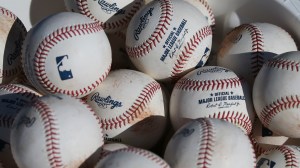ALTOONA, Pa. (WTAJ) — In this episode of Science with Shields, Christy Shields shows you how to make a lava lamp.
What you need:
- Clear Plastic Soda Bottle
- Vegetable Oil
- Water
- Alka-Seltzer
- Food Coloring
- Funnel
Instructions:
You will want to first fill your plastic soda bottle about ¼ of the way up with water. Next, use the funnel and fill the rest of the bottle, until it is about full with vegetable oil. After this, you will add some drops of food coloring, until the water turns the color you picked. You have now made your lava lamp! To make it work, break an Alka-Seltzer in half and drop the pieces into the lamp, and watch it go! For a cool effect, you can put a light at the bottom of the bottle to see the lava lamp better. Send us photos or videos of the lamp by using #SciencewithShields
Science:
There is a lot of science going on in this easy experiment. First, water and oil do not mix. Water molecules are attracted to other water molecules and it is polar. While oil molecules are attracted to other oil molecules, and it is non-polar. This means their molecular structures do not let them bond together or mix. Water also is sitting at the bottom with the oil on top. That is because the water is denser compared to the oil. The food coloring is also denser than the oil, and is made up of mostly water, so it will not mix with the oil and continue to sink down, and then mix with the water. The Alka-Seltzer Tablets are water soluble, and not oil soluble, that is why the reaction will not start until it makes its way to the water. In an Alka-Seltzer tablet, there is citric acid (which is an acid) and bicarbonate (which is a base). Like many experiments we have done before, we know that acids and bases like to react to equalize each other and create carbon dioxide! This reaction is set in place by the water. Once the carbon dioxide is created, it makes bubbles and floats to the top of the bottle to try to escape, once it reaches the top, and the bubble is popped, the water sinks back down to the bottom. This reaction creates the lava lamp effect!
Check out more Science with Shields episodes on WTAJ Plus.


